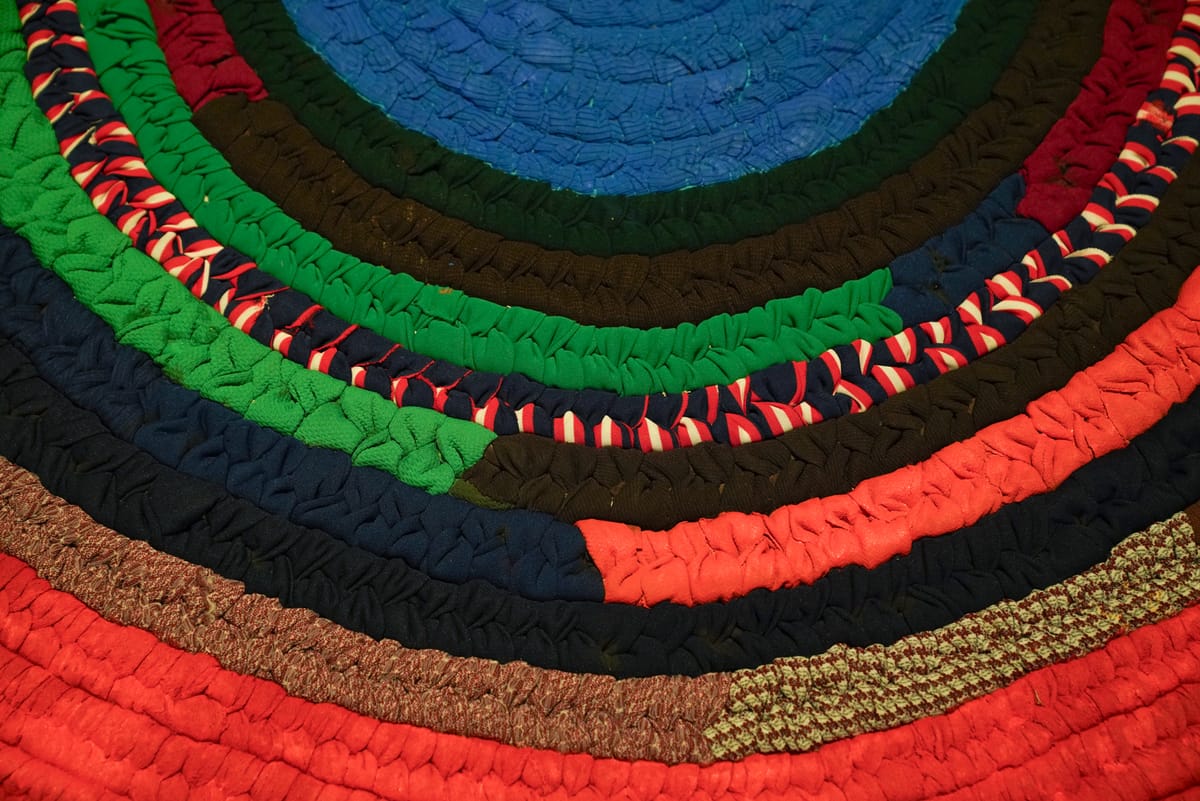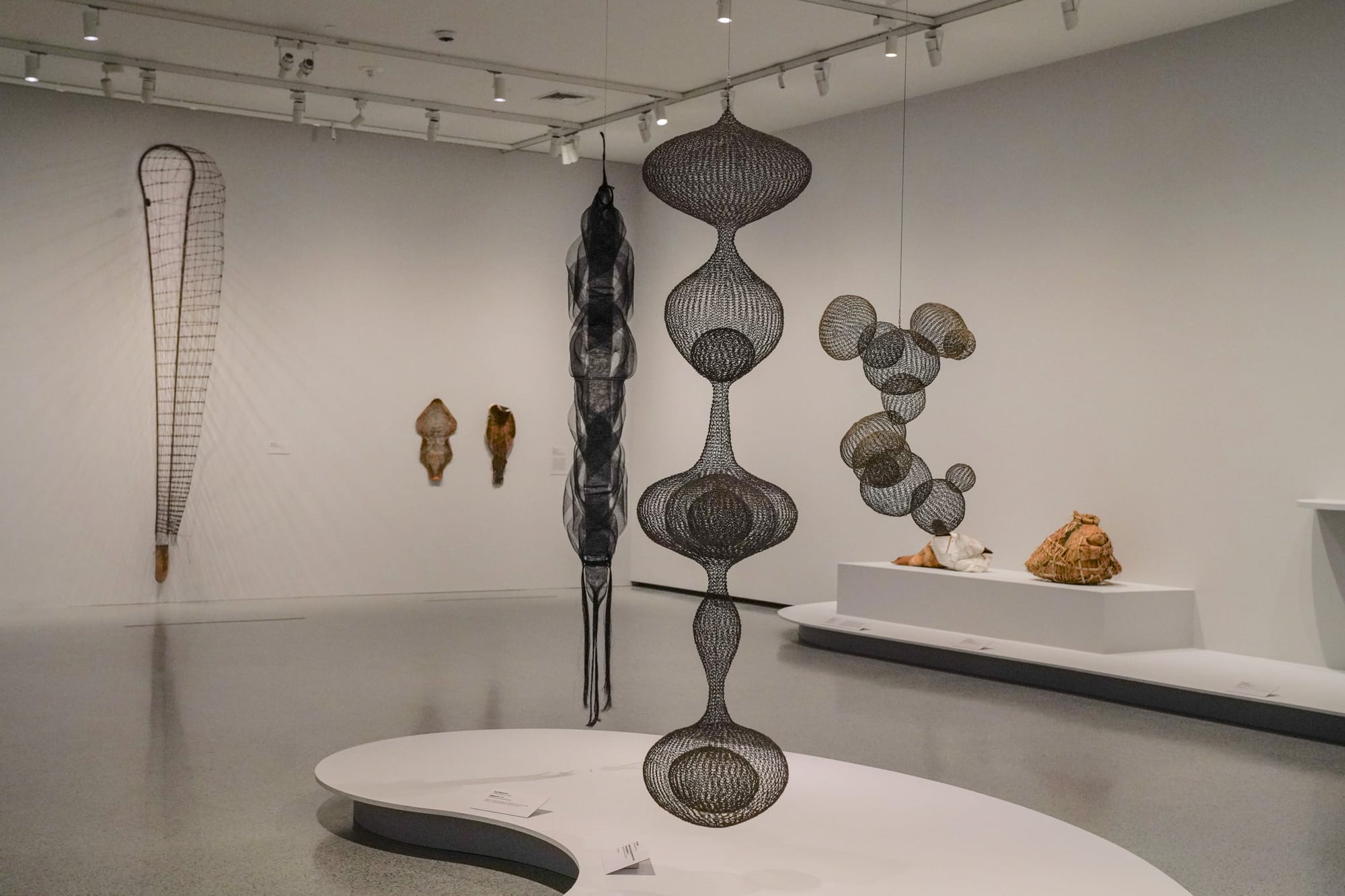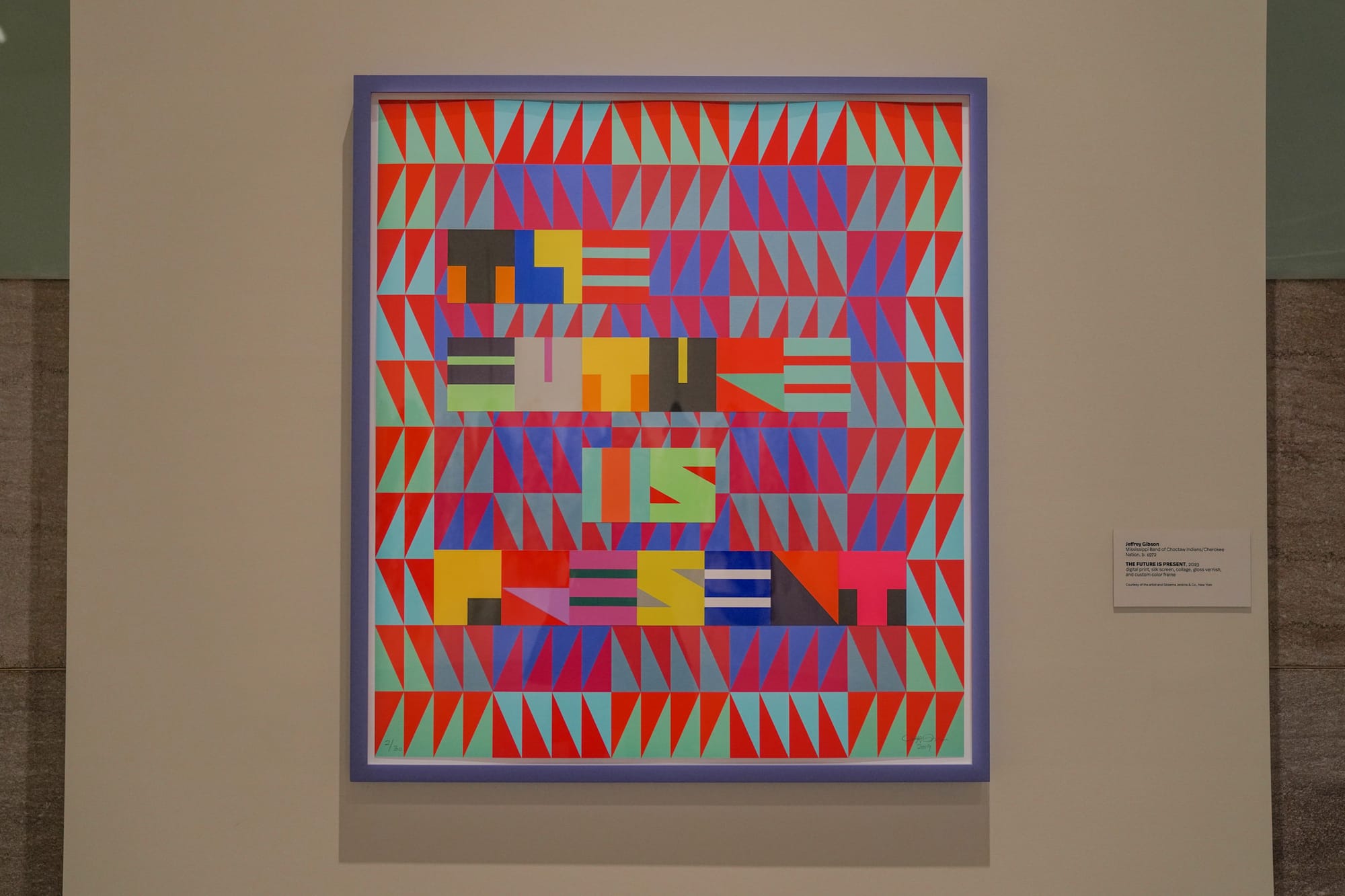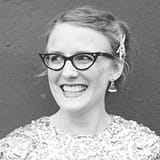A Fiber-Forward Vision of Modern Art
An exhibition at the National Gallery of Art makes the case that textiles are an integral part of modernist art history.

WASHINGTON, DC — By confronting old, narrow definitions of what abstract modernist art is, Woven Histories: Textiles and Modern Abstraction at the National Gallery of Art makes the case that textiles are an integral part of this history. A multitude of intertwined concepts (textile techniques and technologies, social and labor movements, politics, communities, culture and identity, cross-generational influence) come together to illuminate the ways craft, fashion, and design have intersected and melded over the past century — and ultimately to present an expanded, fiber-forward vision of how modern abstract art came to be.
Featuring about 160 artworks made by 57 artists, the sprawling exhibition, curated by Lynne Cooke, is composed of seven distinct sections. It kicks off with works made by European artists in the aftermath of World War I, the Russian Revolution, and the 1918–20 flu pandemic. Garments by painter and textile designer Sonia Delaunay, paintings by Paul Klee and Wassily Kandinsky, weavings by Bauhaus stalwarts Anni Albers and Gunta Stölzl, and other artworks set the stage for the next generation of modernist weavers, displayed in the following room. Among those artists are Olga de Amaral, Sheila Hicks, and Lenore Tawney, all of whom drew inspiration from Albers’s philosophies and passion for pre-Columbian textiles. (Artworks by these weavers were also featured in The Met’s Weaving Abstraction in Ancient and Modern Art earlier this year.)

Several pieces in this exhibition were also presented together in a 2019 group show Cooke curated at the Artist’s Institute at Hunter College, titled Maneuver. As a review in The New Yorker described, it traced “both Albers’s ongoing influence and the staying power of modernism’s pet format, the grid” — a thread that winds through Woven Histories, too.
In a gallery devoted to knots, nets, and webs, the bones of textile making overlap with the visual language of abstract painting — nodding to both Albers’s writings on weaving’s grid structure and art historian Rosalind Krauss’s 1979 essay “Grids,” which argues that this structure is a hallmark of modernist abstract art. The dozen or so large, grid-like pieces that hang from these white walls underscore the connections between oil paintings, woven forms, and weaving technologies, like the Jacquard loom, a predecessor to computers. One label points out that canvas, a woven fabric, is “the literal foundation of modernist painting.” Put another way, paintings on canvas are a form of textile art.

The journey continues with a sampling of baskets and modern woven sculptures, spotlighting off-loom weaving techniques. A curvy, looped wire Ruth Asawa sculpture and Yvonne Koolmatrie’s conical, spiny sedge grass “Eel Trap” (2003) dangle from the ceiling. Shelves filled with small baskets, including several by Ed Rossbach and Lillian Elliot, line one wall, and Martin Puryear’s wire-and-rattan “Greed's Trophy” (1984) emerges from another like a whale fin.
The show takes a detour into the realm of “self-fashioning” and life wear, defined in the exhibition text as “fashioning both a self and a worldview,” as well as industrialized textile production and labor issues. In these rooms, the modern abstraction theme that buttresses the show seems to vanish before reemerging in the finale with a collection of bold and bright contemporary artworks. Diedrick Brackens, Jeffrey Gibson, Ulrike Müller, Harmony Hammond, and others delve into present-day issues of identity, community, sovereignty, and home, while showcasing the monumental artistic possibilities of textiles as medium and metaphor. As American fiber artist Liz Collins describes in a video on the exhibition’s webpage, building fabric doubles as a form of architecture and of painting; it’s a process that’s rich and limitless. And, as the works in Woven Histories demonstrate, fabric making and art making are inseparable and unruly pursuits that defy tidy labels.





Woven Histories: Textiles and Modern Abstraction continues at the National Gallery of Art, East Building (4th Street NW, Washington, DC) through July 28. The exhibition was curated by Lynne Cooke.





